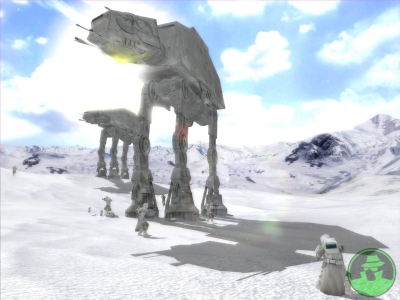I worked on the first Battlefront game last year, modeling and texturing ships, architecture, props, and a couple of characters. I was fortunate enough to get a taste for everything -- I loved the variety. Working on the sequel, in comparison, with the original Battlefront tagged as the "Best- Selling Star Wars Game of all Time," the stakes were now higher and the goals would be more challenging and ambitious. It required my position on the team to be more focused and concentrated on one specific art role, rather than numerous. I was delighted when Matt Palmer, the art director, asked me to come aboard the environments team. There was much I wanted to see in the first Star Wars Battlefront game that I now would be given the opportunity to develop for the sequel.
Well, it's been a long and challenging development cycle. Looking back on the project, we five environment artists -- Moon Bae, Chris Arden, Walter Cosico, Matt Palmer, and myself -- worked very hard to try and re-create the rich and varied environments that graced the Star Wars universe. I'm very happy with the end result.
Anyway, on to the juicy part! So, I've been asked to kindly fill you guys in with "The Good Stuff"... the "Ins and Outs" of how we created rich and varied environments for Star Wars Battlefront II.
Well, first I'll start by explaining the role of an environment artist. My role was to model, texture, and light immersive and virtual 3D environments, also known as "maps" in the gaming language. These complex, 3D-modeled environments (sculpted using 3D software and painted using 2D illustration software) serve two functions for the player:
Typically, the physical makeup of an environment is comprised of:
I'm now going to fill you in on all the relevant tasks which the environment team undertook in order to achieve the desired effect. We broke the processes up into six stages.






